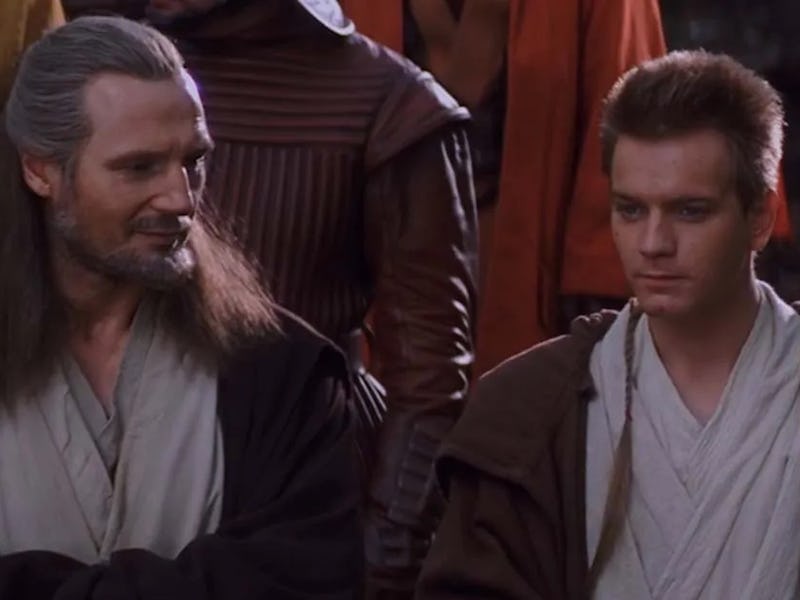A New Novel Just Explained the Weirdest Revenge of the Sith Mystery
Were the Jedi guardians of peace and justice, or just political enforcers?

If the Jedi were guardians of peace and justice in the Republic, why was the Republic struggling? Since Obi-Wan Kenobi spoke his wistful words about the state of the galaxy “before the dark times, before the Empire,” Star Wars canon has gradually clarified the vagaries of the Republic and its fall.
In theory, the three prequels — The Phantom Menace, Attack of the Clones, and Revenge of the Sith — fully explain how the Republic turned into the Empire. And yet, when The Phantom Menace begins, galaxy-wide corruption and poverty are already the status quo. Now, a new novel by genre legend John Jackson Miller called The Living Force is filling in key details, giving the prequel era the clarity it’s needed for a very long time.
The Fall of the High Republic
What was the job of the Jedi in the prequels?
As some fans already know, the High Republic era covers 500 BBY (Before the Battle of Yavin, the climax of A New Hope) to 100 BBY. These centuries have been chronicled in books and comics, are seen on-screen in the kids’ show Young Jedi Adventures, and are about to be covered in greater detail by the new prequel series, The Acolyte. The era’s name comes from the fact the Republic is at a peaceful height, and the core stories of the High Republic are all about the Jedi exploring and establishing outposts.
But fast-forward about 450 years, and the Jedi are dismantling and abandoning their outposts, mostly because they’ve turned their focus to metaphysical pursuits. It’s within this shift that The Living Force makes some previously confusing Jedi activity crystal clear.
Why did people distrust the Jedi?
Who wasn’t a fan of these guys? A lot of people, as it turns out.
Although The Clone Wars and other stories have touched on the idea that economically disadvantaged people might not love the Jedi — particularly once the Clone Wars began — nothing in Star Wars canon will drive this idea home harder than the opening chapters of The Living Force. It’s one year before The Phantom Menace, and we find Qui-Gon Jinn and Obi-Wan Kenobi basically flying coach on a ship called the Regal Zephyr. Everyone on this transport is working class, which is why Qui-Gon chose the route. Soon, he and Obi-Wan have to deal with pirates trying to hijack the ship.
While you’d think the other passengers would be grateful for the intervention, we quickly learn that the average person in this part of the galaxy is annoyed with the Jedi. In the Slice — a wedge of planets between the Core Worlds and the Outer Rim — piracy and crime are rampant. Obi-Wan and Qui-Gon have just finished closing down a Jedi outpost, and a passenger tells Obi-Wan about another closure on a planet called Tharben. As one passenger explains to Obi-Wan, the problem is the lack of Jedi oversight in that tricky area of space: “The star maps don’t tell the real story. The Republic boundary beyond the Mid Rim — that’s imaginary and has been for years. The hyperspace lanes in the Slice that approach Hutt space get a lot of pirate activity.”
Another passenger adds that on Tharben, “Bad things sometimes happened there, but I never saw them. They’re in the open now.” The Slice is overrun with crime, and the Jedi are giving up on this volatile region. In fact, the first section of the book is called “The Jedi Retreat.” These details set up a bigger story, but the cultural context has big implications for the rest of the prequel era. Once the High Republic era ended, much of the Republic’s authority existed only on maps.
How The Living Force Explains Revenge of the Sith
Why was this so easy?
Although we see political corruption in all three prequel films and throughout The Clone Wars, the moment where Palpatine casually convinces the public that the Jedi betrayed the Republic is wild. The Living Force makes this pivot far more credible. Putting aside everything problematic the Jedi did as Republic military leaders, the Jedi Order’s basic policy had already moved away from what their stated mission was supposed to be: to help anyone in need.
At the start of the book, Obi-Wan encapsulates how we think about the Jedi versus what the Jedi should have been doing. After dealing with the pirates, he finds himself faced with legitimate complaints from citizens and quips, “I think I miss when people were pointing blasters at us.”
The Jedi of the prequels — and of our imagination — are cool because they constantly whip out their lightsabers and jump into action. But as this new novel reveals, the Jedi’s downfall happened because they stopped doing the one thing they were supposed to be doing all along: listening to the people of the galaxy.